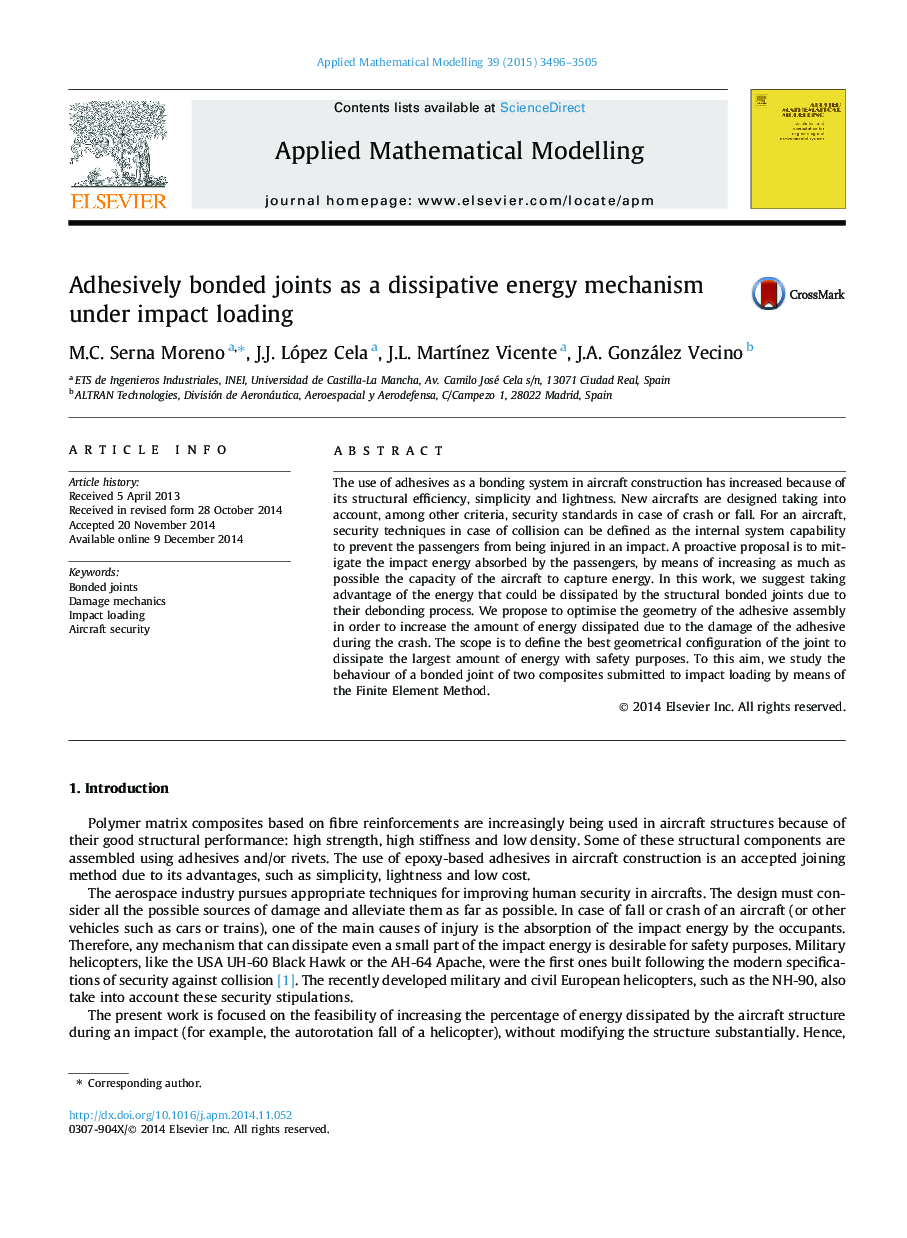| Article ID | Journal | Published Year | Pages | File Type |
|---|---|---|---|---|
| 1703734 | Applied Mathematical Modelling | 2015 | 10 Pages |
The use of adhesives as a bonding system in aircraft construction has increased because of its structural efficiency, simplicity and lightness. New aircrafts are designed taking into account, among other criteria, security standards in case of crash or fall. For an aircraft, security techniques in case of collision can be defined as the internal system capability to prevent the passengers from being injured in an impact. A proactive proposal is to mitigate the impact energy absorbed by the passengers, by means of increasing as much as possible the capacity of the aircraft to capture energy. In this work, we suggest taking advantage of the energy that could be dissipated by the structural bonded joints due to their debonding process. We propose to optimise the geometry of the adhesive assembly in order to increase the amount of energy dissipated due to the damage of the adhesive during the crash. The scope is to define the best geometrical configuration of the joint to dissipate the largest amount of energy with safety purposes. To this aim, we study the behaviour of a bonded joint of two composites submitted to impact loading by means of the Finite Element Method.
